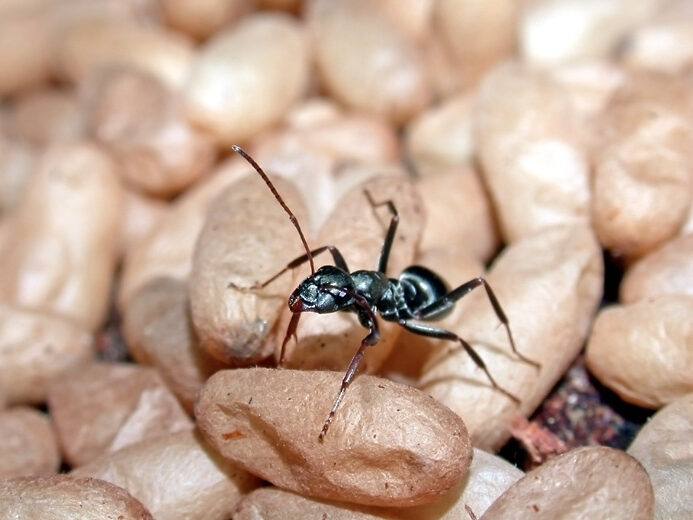
Formica spp
Overview
Formica is a genus of ants commonly found across the Northern Hemisphere, especially in temperate regions of North America, Europe, and Asia. Known for their complex colony structures and diverse behaviors, Formica ants play important ecological roles in their environments.
Identification
Members of the Formica genus vary in size and color, though many are medium-sized ants with a shiny black, red, or reddish-brown appearance. They often have a smooth exoskeleton and a distinctive one-node waist. Their mandibles are well-developed and used for foraging, nest-building, and defense.
Habitat and Distribution
Formica species are versatile and inhabit a variety of ecosystems including grasslands, forests, and alpine meadows. They typically build nests in soil, under rocks, in decaying wood, or as visible mound nests, some of which can reach impressive sizes.
Ecological Importance
These ants are vital to many terrestrial ecosystems. They aerate the soil, help decompose organic matter, and act as predators and scavengers. Some Formica species are known to tend aphids for honeydew, playing a role in regulating aphid populations. Their presence often indicates a healthy, balanced habitat.
Reproductive Behavior
Colonies are generally established by a single queen, although some species may be polygynous. Mating flights occur during warmer months, when winged males and females disperse to mate. Once mated, females shed their wings and attempt to start new colonies. Some Formica species are facultative slave-makers, invading the nests of other ants to steal brood and integrate them into their workforce.
Pollination Role
While Formica ants are not primary pollinators, they do interact with flowers when foraging for nectar or preying on herbivorous insects. These incidental visits may lead to limited pollination in some low-growing or nectar-producing plants. Their frequent movement across a territory allows them to potentially contribute to pollination in certain ecosystems, albeit in a secondary role.
Conservation and Interaction with Humans
Formica ants are generally not considered pests and are often beneficial to agriculture and forestry due to their role in controlling insect populations. However, their mound-building can occasionally interfere with landscaping. Conservation concerns are minimal for most species, though habitat loss may affect specific populations.
